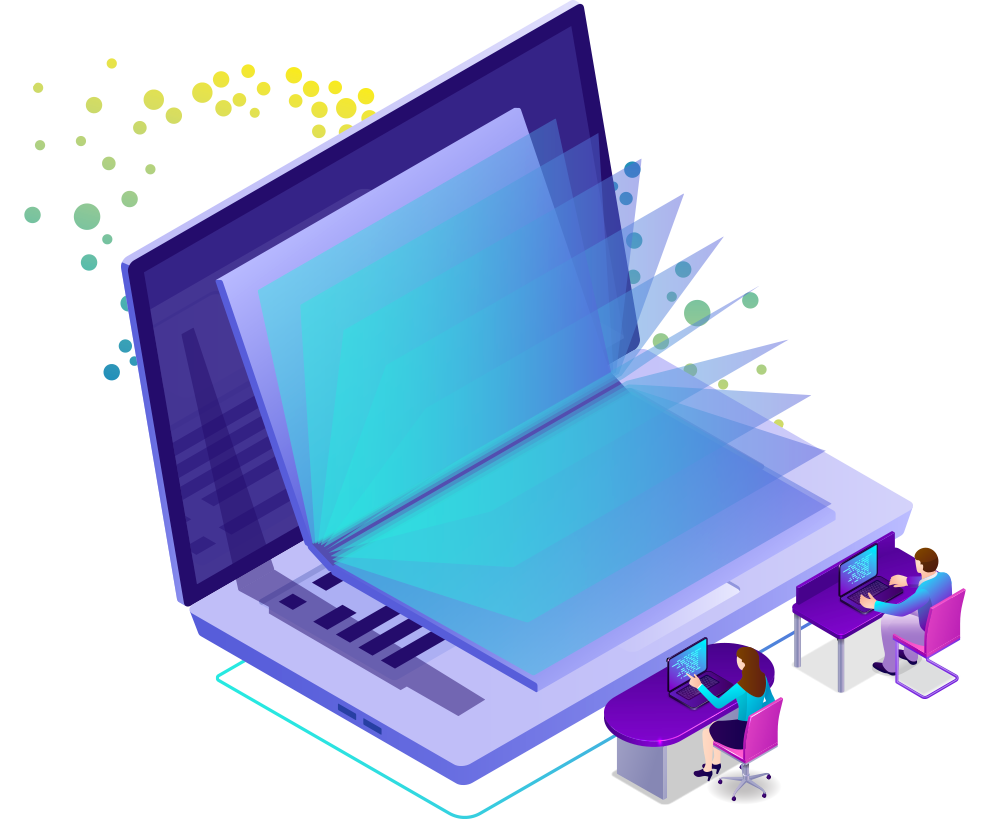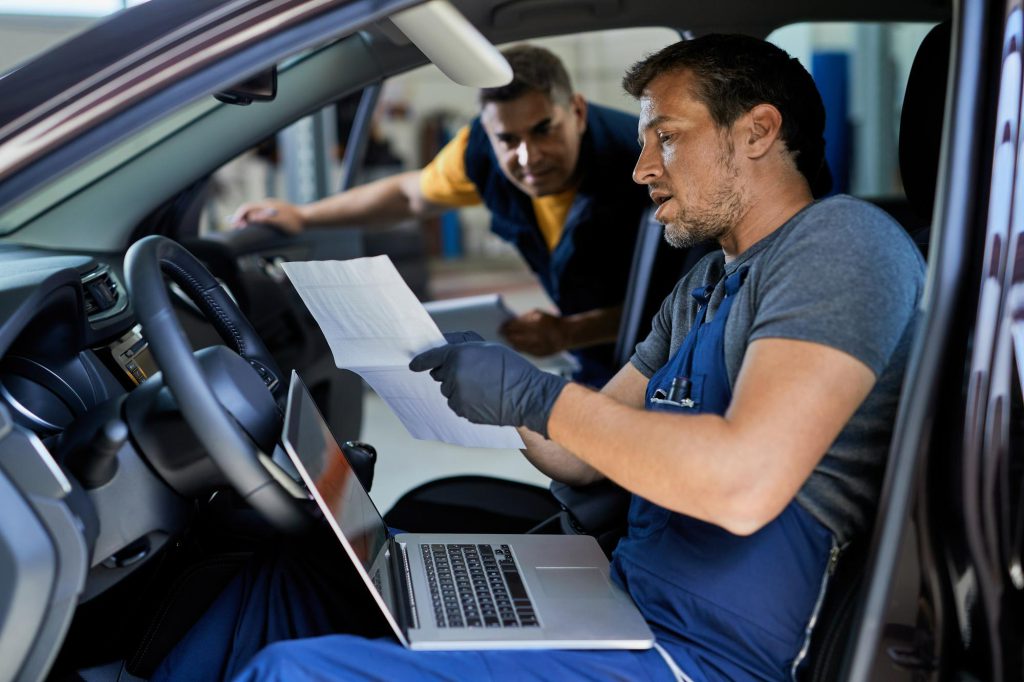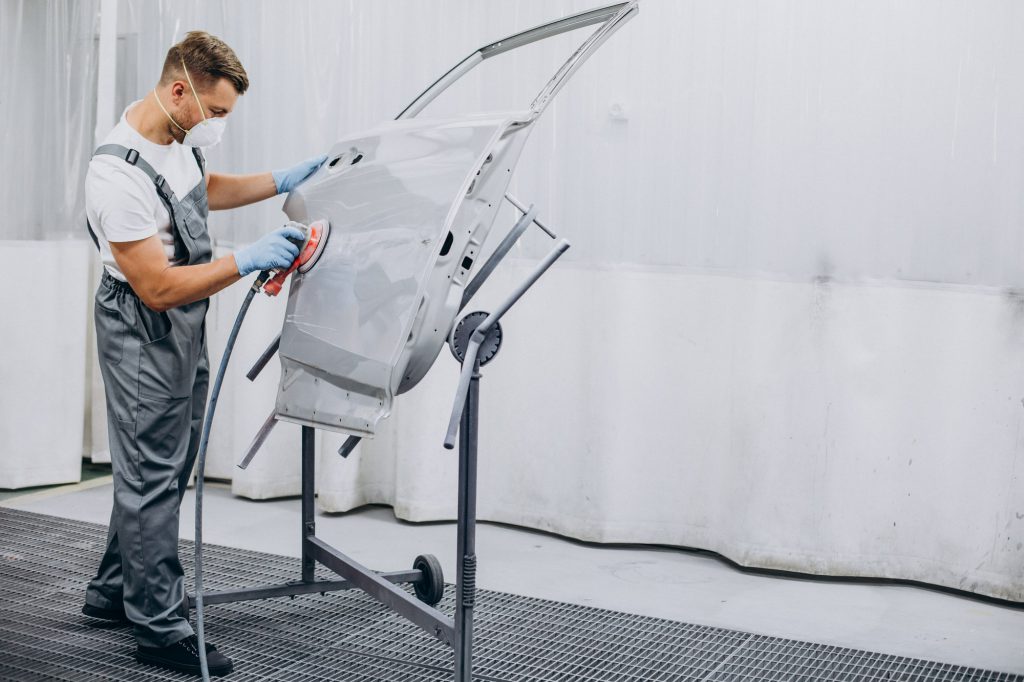
Use of Jamboard and global approach to digital learning at AFGP
VET center Digitisation strategy with training of trainers, teaching devices and Gsuite online environment, use of digital whiteboards (Jamboard) to support interaction.
Italy / AFGP Remedello
To develop a digital strategy for the vet center based on staff qualifications (both digital and methodological), teaching aids and digital tools for integrated teaching management.
AFGP has 3 locations: in Milan, Brescia and Remedello (Brescia). AFGP immediately joined the project of Didactic Innovation (INN) promoted by SCF, thus implementing both the technological/informatics/digital equipment, and promoting the qualification of its staff. The use of the GSuite platform and Classroom therefore predates the arrival of the pandemic, even if the use was more limited: e.g. for sharing documentation between teachers and with trainees, as everyone, trainers and trainees, had their own GMail account. Trainees were assigned tasks through Classroom, with deadlines set, although tests were then carried out in the classroom.
The pandemic has accelerated ongoing processes and, above all, generalised the use of devices and applications by the entire teaching staff; laboratory teachers, in fact, were less accustomed precisely because a practical, hands-on approach is favoured, precisely to enhance the "intelligence of the hands" of the students. For the sake of teaching continuity, but also to comply with the provisions of the Lombardy Region for the recognition and accountability of training hours, the workshop trainers also carried out distance learning activities.
In addition, all classrooms are equipped with video projectors connected to tablets and PCs for all trainees. The "Business Services" sector alone has also equipped all trainees with tablets. The other sectors each have one classroom with tablets (so about 26) which are booked by the trainers for specific activities (e.g. evaluations through Kahoot).
With the pandemic, equipment to support distance learning has been strengthened, including: higher quality cameras (also with Bluetooth connection) and their supports. In addition, further functions have been activated (e.g. distance tests with tasks/exercises carried out by the students and uploaded to Classroom).
There is therefore an explicit strategy of the Centre and the organisation towards innovation, supported in an explicit way (e.g. internal staff circulars). The co-ordinator promotes participation in training and especially the exchange of experiences among staff (with moments organised and supported by the management). Some tools are tested and it is seen how they work to decide then what to keep and what to abandon.
During the emergency phase of the pandemic (March-June 2020), all lessons were conducted remotely using GSuite tools. Synchronous online lessons (as required by the Region) in which the class blackboard was replaced by a sheet in which the teacher wrote down the progress of the lesson, filming himself at the same time with a smartphone (a procedure that also had a profound effect on the quality of the filming). In addition, the exercises and assessment were also managed via Google Classroom, as was already the case in the past, but the students uploaded their exercises onto the platform and the teacher carried out the assessment remotely.
During the summer of 2020, in a climate of profound uncertainty regarding the resumption of the new training year and what the pandemic trend would be like, the teachers confronted each other and, also on the basis of the training followed in the previous months (by SCF but also on a personal basis), they shaped a more organised response by introducing new tools and new applications, just to be ready in case of new closures. Since the first months the SCF had to manage cases of pupils in quarantine at home and then also closures (sometimes prolonged) of the educational/school/training facilities were necessary. As a rule, one day of presence was allowed in the IeFP for laboratory activities; therefore, the laboratory teachers could carry out their teaching in presence for practically the whole course of the 2020-2021 training year.
For the mathematics/science axis, the use of Jamboard was introduced (this practice continues to this day). The blackboard has therefore been replaced by a digital blackboard which, however, allows: much more interaction between teacher and pupils (even the exercises can be done "live" on the digital blackboard; pupils can write down things, etc.); to store everything that happens during all the sessions of the same module; to produce a pdf file (both in itinere and final) which can be shared with everyone (absentees, but also others to study: e.g. the file of the whole module is transmitted at least 1 week before the scheduled test).
The tests were managed - as already written - through Google Classroom at a distance, while now that we are back in presence, the tests are done in the classroom.
Other classroom trainers have used other useful assessment applications for other subject areas of the Cultural Area, such as Socrative or Kahoot.
Assessments continue to be naturally personalised in view of the pupils' different certifications and in line with IEPs, even if there is a tendency to harmonise them more and more because many pupils have difficulties even without certification; therefore, the teacher tends to have concept maps produced for everyone; everyone can use the calculator, etc.
The stable use of the Jamboard integrated into classroom teaching for the Mathematics and Science cultural axis involved a progressive path from the first lockdown at the end of February 2020 to the autumn of the same year.
Cultural Area (10 trainers):
- 2 trainers of Mathematics, Science of which 1 is also a trainer of Citizenship, Sector Coordinator and Tutor of 1 course
- 1 trainer in Mathematics only
- 1 English trainer, Head of Cyberbullying Commission, Tutor of 4 courses
- 2 Trainers of Italian and History (of which 1 is Tutor of 1 course)
- 1 trainer of Citizenship and Ethics, Tutor of 1 course (and also coordinator of the mechanical machine tools sector)
- 1 Motor skills trainer
- 1 IT trainer
- 1 IRC trainer (religion)
Professional-Technical Area (8 trainers):
- 2 Motor Technology and Mechatronics trainer
- 6 Laboratory trainers
Practices and tools are adopted overall on all learners in the Motor Vehicle sector: about 150 learners in the 3-year qualification pathways and about 30 in the 4-year ones. The age of learners is between 14 and 18/19 years.
Qualifications: Motor vehicle repair operator (EQF 3) and Motor vehicle repair technician (EQF 4).
There are no dual tracks in this sector. It is a choice of the VET centre: both medium/large enterprises and small family-run ones, in fact, do not appreciate the model, despite the facilities; they prefer the apprenticeship formula, which guarantees the constant presence of the learner also in view of a subsequent job placement.
In this section we particularly focus on the direct experience of the interviewee, Alessio Monteverdi, who, besides being the coordinator of the sector, is also a teacher of the Mathematical-Scientific Area. On average, there are 4 hours/week in the 1st year and 2 hours/week in the remaining years where the training period is introduced (which can reach almost half of the hours in 3 and especially in 4). Generally, the sessions are of 1h.
As already mentioned, the VET centre had already adopted the Google+ Classroom platform and the teacher was therefore already accustomed to sharing with colleagues (documentation) and students: the handouts; the different (customised for DSA, BES, 104) exercises assigned with deadlines (verification, however, was previously done in the classroom).
This made it possible to activate distance learning a week after the total closure of schools (which took place in Lombardy and other regions on 23/2/2020 and in fact for the rest of the 2019-2020 academic year).
The approach was (and still is) one of "frontal" teaching with sequences (during a training session (= 1h) integrated of: introduction on the blackboard; exercise (with pupils engaged individually of which at least 1 on the blackboard); in-depth study of elements highlighted as weak during the exercise + assignment of tasks to be carried out at home and verification (planned) in the classroom.
During the emergency phase of the pandemic (March-June 2020), all lessons were conducted remotely using GSuite tools. Synchronous online lessons (as required by the Region) in which the class blackboard was replaced by a sheet in which the teacher wrote down the progress of the lesson, filming himself at the same time with a smartphone (a procedure that also had a profound effect on the quality of the filming). In addition, the exercises and assessment were also managed via Google Classroom, as was already the case in the past, but the students uploaded their exercises onto the platform and the teacher carried out the assessment remotely.
Trainers: many incentives to get involved, to approach new methodologies and new tools.
Learners: too early to assess the benefits and impacts on learners. The forced and massive adoption of DAD in more than 1.5 years has left a big legacy: Inconsistency in classroom/CFP presence; difficulty in disconnecting from the mobile phone; difficulty in concentrating for long periods. Pupils immediately showed the need to DO... this is also why workshop teaching immediately favoured the presence and direct action without the mediation of technology, precisely because of the excessive use of these as a necessity in classroom teaching. Pupils naturally have more tools at their disposal which they know how to use and handle carefully.
Organisation: team working (more collaboration and confrontation); more circularity of practices within the teaching staff.
Increased motivation of pupils, increased qualification of human resources.
The massive adoption of DAD has been a major limitation.
Today, trainers and learners are saturated SI suggests using digital tools while enhancing human relationships.
It is also essential to invest in human resources training.






